A Harvard study released earlier this month, suggesting the coronavirus outbreak in the Chinese city of Wuhan started in August 2019, has been touted and publicized by many U.S. politicians including President Donald Trump.

Donald Trump retweets a Fox News post on the study. /Twitter screenshot
But shortly after, the methodology and findings in the study were challenged by the Chinese government, independent scientists, and worldwide media houses.
The research, which has not been peer-reviewed by other scientists, used satellite imagery of hospital parking lots in Wuhan – where the disease was first identified in late 2019 – and data for symptom-related queries on Chinese Google-like search engine for keywords such as "cough" and "diarrhea."
Authors claimed that the traffic spike outside several Wuhan's hospitals and a rise in online symptom search data collected from Wuhan residents may suggest the coronavirus hit the area earlier than officially reported.
Chinese Foreign Ministry spokeswoman Hua Chunying dismissed as "incredibly ridiculous" when being asked about the research at a news briefing. "I think it is ridiculous, incredibly ridiculous, to come up with this conclusion based on superficial observations such as traffic volume," she said.
CGTN fact-checked the study and found obvious shortcomings in both analysis methods used in the study. We have also tried to get in touch with the authors, but none of them replied as of press time.
First, the research says there is an obvious rise in car numbers in the parking lots of Wuhan's six major hospitals from last August to December, and claimed they have excluded factors including tree cover and building shadows that may affect the assessment.
But from the images provided, we can easily notice that the photos were captured from different angles.
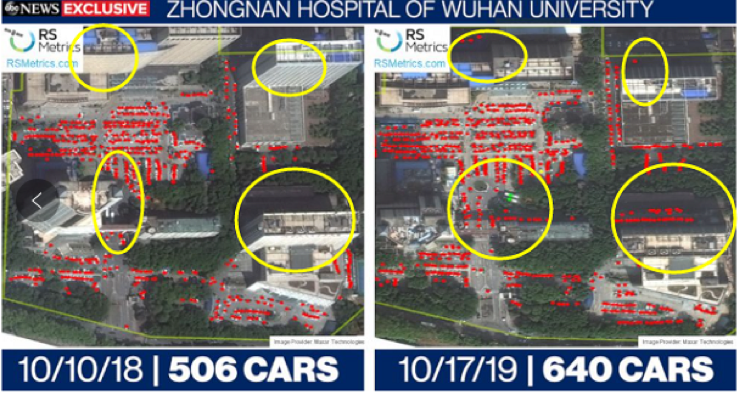
We highlighted the difference in the yellow circles for a better view. /Image from the Harvard study
Take the Zhongnan Hospital image as an example. Chinese satellite experts explained to
Global Times
that the photo on the left with fewer vehicles was taken from an inclined angle. Thus, many cars were blocked by buildings and couldn't be seen in this picture. While the left one was taken from a vertical angle, which can give viewers a clearer view of vehicles. It's fair to say the comparison is not as precise as it should be.
If you take a look at other images used in the report, you will find similar loopholes.
Bellow is the same parking lot satellite image of this hospital taken in 2017, which was taken in the same angle as 2019. You can see that more cars were found in 2017 than in 2018 as well.
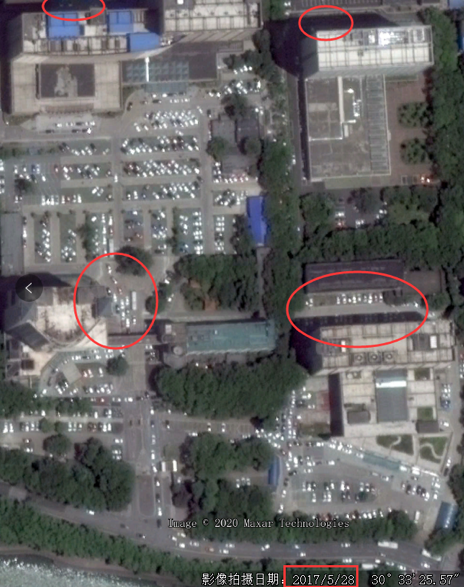
Satellite image taken in 2017. /Global Times
Second, one of the six hospitals selected by the study authors as an observation target turned out to be a maternity care center that doesn't have fever clinics or respiratory practice for adults.
People who developed COVID-19 related symptoms would not seek treatment in this hospital. Additionally, previous studies published in several renowned medical journals have proven that children aren't at high risk for coronavirus.
Zeng Guang, chief epidemiologist at the Chinese Centers for Disease Control and Prevention, said the study lacks basic knowledge of clinical symptoms of COVID-19.
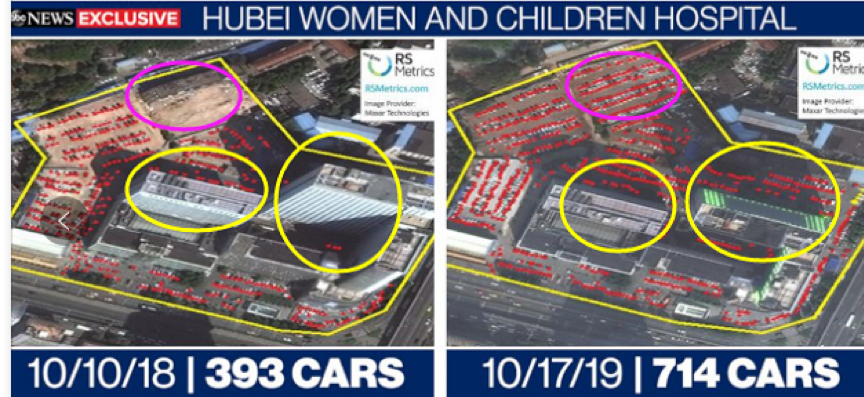
Satellite images of Hubei Maternal and Children Hospital. /Global Times
Another aspect worth mentioning is that according to residents and hospital staff, the place in the red circle in the 2018 image didn't become a parking lot until 2019 when the hospital underwent a reconstruction project. As the construction site expanded, the place turned into a temporary parking lot with more spaces.
Third, the study points out there is a spike in online traffic in the Wuhan region among users asking China's Baidu search engine for information on 'cough' and 'diarrhea.'
Based on CGTN's findings, via the same tool used by Harvard researchers, searches for "diarrhea" actually decreased from August 2019.
Baidu, which developed the search engine, also refuted the result, claiming searches for "diarrhea" among Wuhan users declined over that period, coinciding with our search results.
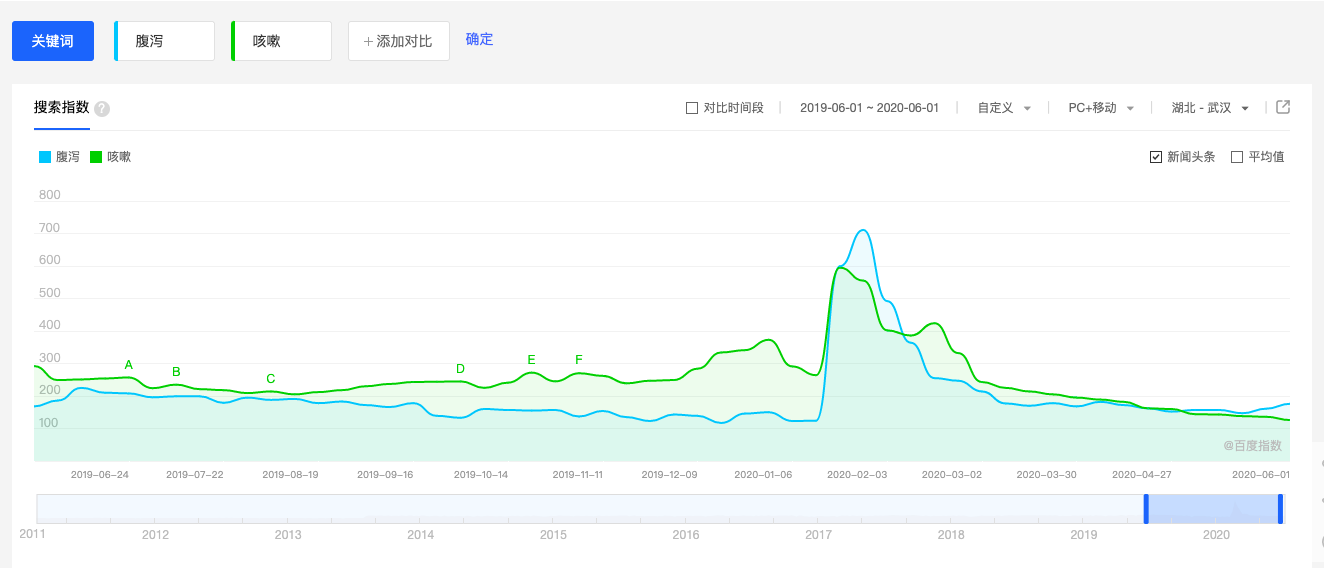
The green line represents the search trend in cough, and the blue one is diarrhea. /Screenshot from the Baidu Trends
BBC
has done a similar analysis, finding out the term used by the Harvard team turned out to be a direct translation from Chinese as "symptom of diarrhea."
One of the paper's lead authors, Benjamin Rader, commented to BBC that they chose that term because it was the best match for confirmed cases of COVID-19 and was suggested as a related search term to coronavirus.
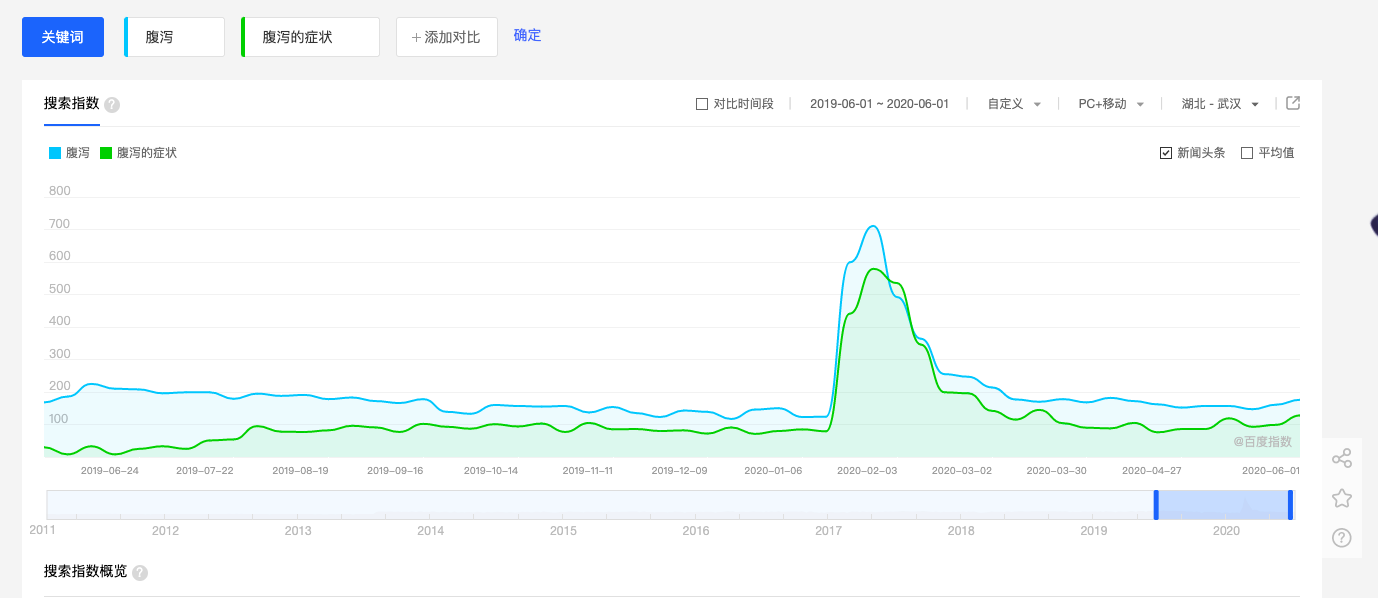
The green line represents the search trend in "symptom of diarrhea," while the blue one is diarrhea. /Screenshot from the Baidu Trends
BBC also looked up search results for keywords like "fever" and "difficulty in breathing," other common symptoms for COVID-19 patients, finding searches for "fever" and "cough" slightly increased after August, and "difficulty in breathing" decreased in the same period.
But
a clinical study
has shown that cough, fever and shortness of breath are the top three major symptoms developed by patients, while diarrhea ranked the seventh most common symptom.
Dr. Eric Topol, director of the Scripps Research Translational Institute, told
Reuters
the research method is not validated and is "very indirect and imprecise."
Topol, who was not involved in the research, said he doubts the outbreak began in August, based on the evidence he has seen so far.
Imperial College London, in collaboration with the World Health Organization, has also traced the virus' family tree, estimating that it appeared in China around December 5.
 简体中文
简体中文

